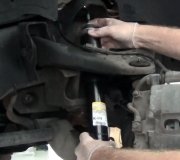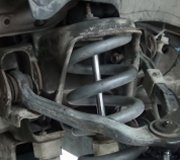Monday, June 10th, 2013 AT 4:18 PM
I have a 2004 Grand Prix, it has a howling noise in the front end, I know it's not the tires cuz I had those changed, I also don't think it's a hub bearing cuz I jacked the front end up and grabbed hold of the tires, and shook them there tight, no slop, I also started it and put it in drive when I had it jacked up, it does not howl when wheels are turning, only howls when weight is on front end and driving down the road straight, when I turn a corner the howl goes away only until the wheels get straight again the howl comes back. Do you have any suggestions, Please and Thank You.


